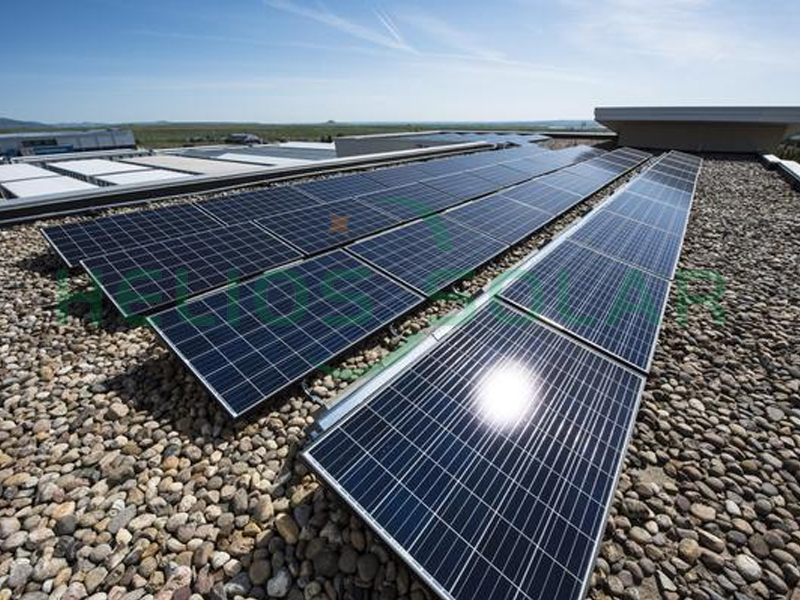As the world increasingly turns to renewable energy sources, solar power has become a leading option for both residential and commercial energy needs. Of the various types of solar panels available, monocrystalline solar panels are highly regarded for their efficiency and aesthetics. However, a common question is: do monocrystalline solar panels require direct sunlight to function effectively? In this article, we will explore the characteristics of monocrystalline solar panels, how they perform in different lighting conditions, and the implications for homeowners and businesses considering going solar.
Understanding Monocrystalline Solar Panels
Monocrystalline solar panels are made from a single crystal silicon structure, which gives them their distinctive dark color and rounded edges. This manufacturing process increases the purity of the silicon, resulting in higher efficiency than other types of solar panels, such as multicrystalline or thin-film panels. Typically, monocrystalline panels have an efficiency rating of 15% to 22%, meaning they can convert a large portion of sunlight into usable electricity.
One of the main benefits of monocrystalline solar panels is that they save space. Since they produce more electricity per square foot, they are an excellent choice for homeowners with limited roof space. Additionally, their stylish design often makes them more visually appealing, which may be a consideration for many homeowners.
Role of Sunlight in Solar Panel Performance
To understand whether monocrystalline solar panels require direct sunlight, it is important to understand how solar panels work. Solar panels convert sunlight into electricity through the photovoltaic effect. When sunlight hits a solar cell, it excites electrons, creating an electric current. Therefore, the amount of sunlight that reaches a solar panel directly affects its energy output.
While direct sunlight is ideal for maximizing energy production, monocrystalline solar panels perform well even in less-than-ideal conditions. They can generate electricity on cloudy days or in the shade, albeit at a lower efficiency. In fact, monocrystalline solar panels perform better in low-light conditions than other types of solar panels. This feature makes them a versatile choice for a variety of geographic locations and weather conditions.
Performance Under Different Lighting Conditions
1. Direct Sunlight:
Monocrystalline solar panels can reach their peak efficiency under optimal conditions, such as on a sunny day. They produce the most electricity at this time, so this is the best time for homeowners to rely on solar energy.
2. Partial Shading:
Monocrystalline silicon solar panels can still generate electricity in the case of partial shading. However, the amount of power generated depends on the degree of shading. If only a small portion of the solar panel is shaded, the impact on the overall performance may be small.
3. Cloudy Days:
On cloudy days, monocrystalline solar panels can still work effectively. Although their output will be lower than on sunny days, they can still capture scattered sunlight. This ability to generate electricity on cloudy days is one of the reasons many homeowners choose monocrystalline solar panels.
4. Low Light Conditions:
Monocrystalline solar panels can generate some electricity even in low light conditions such as dawn or dusk. However, the output will be significantly lower than during peak sunlight hours. This means that while they do not require direct sunlight to operate, their efficiency is greatly increased as a result.
Impact on Homeowners and Businesses
For homeowners and businesses considering installing monocrystalline solar panels, it is crucial to understand how they perform under different lighting conditions. While direct sunlight is the ideal condition for maximizing energy production, these solar panels can function well in less-than-perfect conditions, allowing for flexibility and reliability.
1. Location Considerations:
Homeowners in areas with high cloudiness or short sunshine hours may still benefit from monocrystalline panels due to their high efficiency in low-light conditions. When deciding to install solar panels, it is important to evaluate local weather patterns and the amount of sunshine.
2. Installation Planning:
Proper installation is key to optimizing the performance of monocrystalline solar panels. Ensuring that the panels are positioned to maximize sunlight exposure while accounting for potential shading from trees or buildings can significantly increase energy production.
3. Energy Demand:
Understanding energy needs and consumption patterns can help homeowners and businesses determine the appropriate size and number of solar panels needed. Even if output is reduced on cloudy days, having a sufficient number of panels can ensure that energy needs are met year-round.
In conclusion
In summary, while monocrystalline solar panels do not strictly require direct sunlight to work, direct sunlight significantly increases their efficiency and energy output. These panels are designed to perform well in a variety of lighting conditions, making them a versatile choice for solar power generation. Homeowners and businesses can benefit from their high efficiency even on cloudy days, but factors such as location, mounting, and energy needs should be considered when making solar panel decisions. As the demand for renewable energy continues to grow, understanding the capabilities of monocrystalline solar panels will enable consumers to make informed choices for a sustainable future.
Post time: Nov-14-2024


